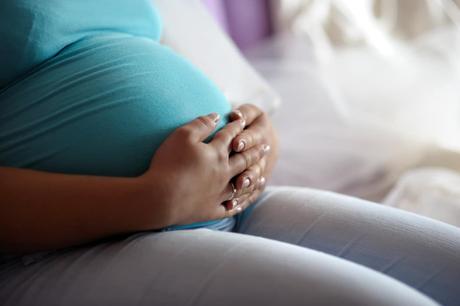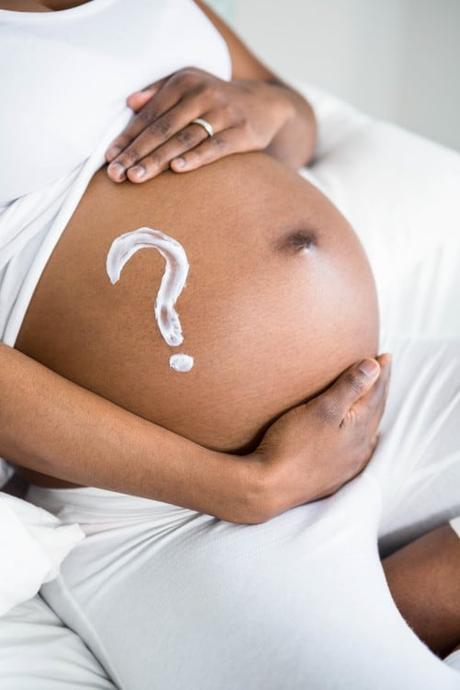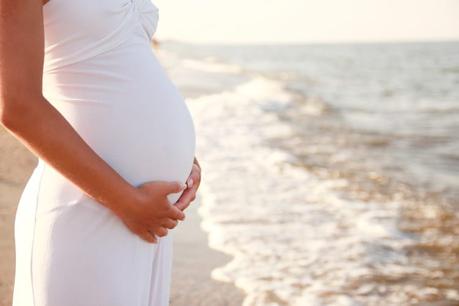‘How did you feel before you went into labor?’
That’s the first question pregnant women ask when they get to meet someone who recently gave birth.
However, each person passes through it differently, so you’ll probably end up with a bunch of different answers.
That’s why we’re here to answer all your questions about the couple of weeks before labor.
Content:
- How Did You Feel Before You Went Into Labor?
- What to Expect the Week Before Labor, A Day Before Labor, And Before Labor Starts
- What You Need to Do During Early Labor
- Hospital Bag Checklist For Birth
How Did You Feel Before You Went Into Labor?

Typically, every woman wants to know what to expect before labor, and it’s for all the right reasons.
Many women get false alarms, and it turns into a disappointment when they realize they’re not getting a baby in a few hours.
For that reason, you should know what to expect right before going to labor. Mostly, women on the verge of delivery feel a sudden rise in their energy levels.
The urge to clean around the house overcomes them, and their joints feel more relaxed.
On top of that, their breath feels easier due to lightning, which is the phase when the baby drops into the pelvis.
After these signs, pregnant women likely lose their muscle plug. The plug serves as a seal for your uterus. When your baby is ready to come out, the plug will clear the road first.
It may come out in small pieces or one large piece accompanied with a bloody discharge, and some women don’t see it until they deliver. However, it’s one of the common signs to look for.
Another feeling you’ll definitely get before labor is contractions. A lot of them are fake alarms, though, so you ought to learn how to differentiate.
Braxton Hicks contractions frequently happen in the last few months before delivery, and they don’t mean your baby is coming.
Real contractions are stronger than Braxton ones, and they get stronger with time, rather than easing their way up.
Plus, real contractions won’t go away when you change positions like the way it is with Braxton Hicks.
What to Expect the Week Before Labor, A Day Before Labor, And Before Labor Starts

The signs of nearing labor don’t necessarily appear a day or two before it. With some women, the symptoms start nearly a month before, and it’s completely normal.
Here, we’ll discuss what to expect a week, a day, and a few hours before labor, so you don’t have to ask, ‘how did you feel before you went into labor?’
The Week Before Labor
There are a lot of signs that might appear a week or two before you go into labor. Here are the most common ones.
That being said, every woman is different from the other, so some of these signs may not occur. It’s always good to know what to expect, though.
Energy levels Rising
Some days before labor, it’s completely normal to experience a sudden surge in energy levels.
It’s closely associated with nesting, which is the urge to clean around the house and prepare it for the coming baby.
Some women go through nesting symptoms a lot of weeks before labor, but the majority experience it a week or so before. In this phase, the best you can do is relax and save your energy for when the time comes.
Bump Dropping
Like women, babies are all different from each other. Some babies will decide to drop into the pelvis a week or some days before labor, and that’s what happens most of the time.
On the other hand, some stubborn babies wait for the last few hours before delivery to drop; it all depends on what your baby wants!
The first sign you’ll notice is your bump dropping considerably. You’ll wake up one day to feel your breath coming out lighter because there’s no more pressure on your diaphragm. Plus, your upper bump will drop from its initial position, and you’ll feel the bottom getting heavier.
Mucus Plug Falling
Most people don’t know about the mucus plug because it doesn’t come to mind when someone asks, ‘how did you feel before you went into labor?’
A lot of mothers know it’s almost time to give birth when they notice a pinkish vaginal discharge.
It’s called the mucus plug, and it’s supposed to keep your uterus closed during the pregnancy. When it drops into your underwear, it means you have a few days before going into labor.
It’s not always noticeable, so there’s a chance you won’t see it before delivering. If you do see it, though, it means your labor is getting near.
Sudden Shooting Vaginal Pain
During the phase of the baby falling into position, you may experience some sudden vaginal pain.It lasts for a few seconds before going away, and it’s completely normal.
It’s likely caused by the shift in the baby’s position. When it happens, it means you’ll welcome your baby in a few days.
Heightened Emotions
A lot of pregnant women experience overwhelming emotions a week or so before labor. When you do not see any physical signs, this can be your cue that you’re about to give birth.
It depends if you’re already an emotional person or not. However, most women get too emotional before labor. You may find yourself crying at the slightest inconvenience, and your emotions will keep swirling.
The Day Before Labor
As the labor gets closer, the signs change. The labor day is getting imminent, and your body adjusts accordingly.
Here are the symptoms you may experience a day or two before labor. They should answer your question: how did you feel before you went into labor?
Loose Bowels & Diarrhea
Although not the most convenient symptom, loose bowels are a strong signal for incoming labor.
It’s your body’s way of making room for the delivery. If you notice that your bathroom trips are becoming more frequent, it’s a sign that your labor may be right behind the door.
Diarrhea is also one of the most common signs of the day before labor, but not all women experience it.
Severe Back Pain
All pregnant women experience back pain one way or another. It may be because of the weight added to their bodies, which may result from the baby’s position. Either way, it gets more severe 24 hours before delivery.
If you ask any woman, ‘how did you feel before you went into labor?’ Back pain will likely be the first answer.
Your joints and ligaments will be loosening up, preparing for your body to go into labor. As a result, your back pain will intensify, and you’ll feel uncomfortable.
As childbirth gets closer, the pain will start radiating into your pelvis area, and changing your sitting position won’t alleviate the pain. That’s when you know you’re about to give birth.
Contractions
Although Braxton Hicks start weeks before labor, the real contractions will only begin around one day before delivery. Your uterus and its muscles will be preparing for the labor, and you’ll feel it clearly.
You’ll easily know the difference between Braxton contractions and labor ones.
A day before the labor, your contractions will be intense and strong, and they may last for a minute or longer. Whereas false contractions only last for a few seconds.
Labor contractions also occur every 5 minutes on average. When that happens to you, get prepared for a day or two of labor.
Dilation
Contrary to common belief, cervical dilation doesn’t only occur right before delivery. With some women, it may start a few weeks before, but you’ll likely start noticing it a day before delivery. Or your doctor will check it during your weekly check-up.
Your cervix will likely dilate 2 or 3 centimeters the day before labor. It’s supposed to reach 10 centimeters before delivery, so the minor dilution means you’re about a day away from the due time.
Loose Joints
At the end of your pregnancy, your body will start releasing more relaxin, which is a hormone that loosens the ligaments and joints. As a result, you’ll feel relaxed joints, and the pressure will increase in your lower back.
You may not know this, but diarrhea that happens before labor is a side effect of relaxin release. The hormone causes the muscles around the rectum to relax, thereby causing diarrhea.
Right Before Labor Starts
How did you feel before you went into labor? Is water breaking the only sign of the incoming baby?
No, on the contrary, multiple signs tell you you are about to go into labor. You’ll likely experience these a couple of hours before you start delivering.
Water Breaking
Water breaking is the most common sign of labor, and it’s the sign you usually see in movies and TV shows. It happens during what’s known as active labor, which is the actual start of the delivery.
When your water breaks, there’s no doubt you’re about to give birth. It happens when the amniotic sac breaks, thereby releasing the fluid inside.
It may come out as a full-blown gush or a thin trickle. Either way, you’ll feel it, and you should notify your doctor there and then.
Regular Contractions
As the labor comes closer, the contractions become stronger and more regular. You’ll notice they start coming in a pattern rather than every few hours.
Right before delivery, each contraction will last for about one minute or more. You’ll also notice they start getting stronger with time.
Keeping track of your contractions is always useful for the delivery, and it helps your doctor expect when you’ll be ready for delivery. Since you won’t be in shape to keep track of anything, you can ask your partner to do it.
Cramps
Most women experience leg cramps when they go into active labor. Some of them even get back cramps, which is entirely normal. There’s also a heavy feeling that intensifies in your back as you go into labor.
Nausea
Nausea is one of the most common signs of active labor, but most women overlook it for many reasons.
For starters, a lot of women experience nausea regularly throughout their pregnancy, which gets them used to the feeling.
When it occurs again before labor, they don’t take notice of it. So, it doesn’t come to their mind when someone asks, ‘how did you feel before you went into labor?’
On top of that, it’s hard to notice a feeling of nausea when you have water gushing out of you.
Women usually only notice the water breaking and contractions, and they neglect the feeling. However, it’s a vital sign that labor is right behind the door.
What You Need to Do During Early Labor

Early labor signs mean you’re about to give birth, but not now.
It may be in a week or in a few days, but the baby isn’t ready to come out yet. If you go to the hospital in this phase, there’s a high chance they’ll send you back.
Most pregnant women spend the last month waiting for the first sign of giving birth, so they rush to the hospital on the spot.
However, the best thing you can do during early labor is to stay at home and try to get yourself comfortable.
There are a lot of ways to alleviate the discomfort of early labor signs. For example, you can go for a walk, which should help with back pain and loose joints. Practicing some breathing techniques also enables you to overcome anxiety.
Moreover, you can change your position regularly. Staying in one place for long will likely add pressure on your joints, causing you discomfort.
Lastly, you can take a hot shower or stay in a warm bath for some time. All of these will help with the pain a bit until active labor signs start kicking in.
You can also read about what to pack in the hospital bag
Final Thoughts
Well, now you don’t need to ask anyone, ‘how did you feel before you went into labor?’
The list above shows all the signs that you’ll likely experience before going into labor.
Everybody is different, though. You may not experience some symptoms, and some things may happen before or after they should.
What’s important is to relax, have some time to rest, and save your energy for the big day!
